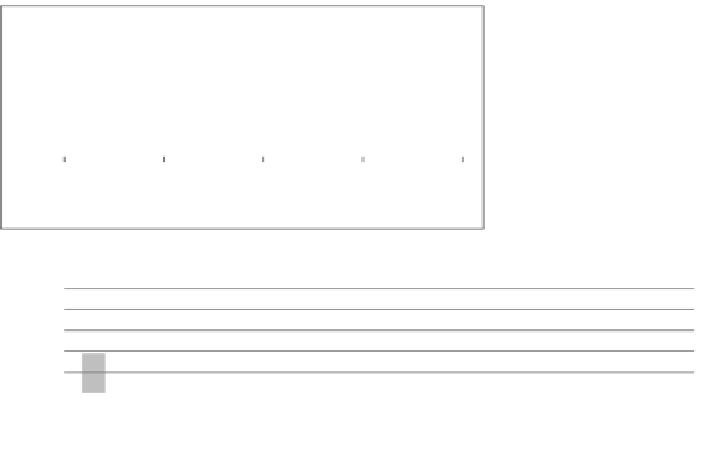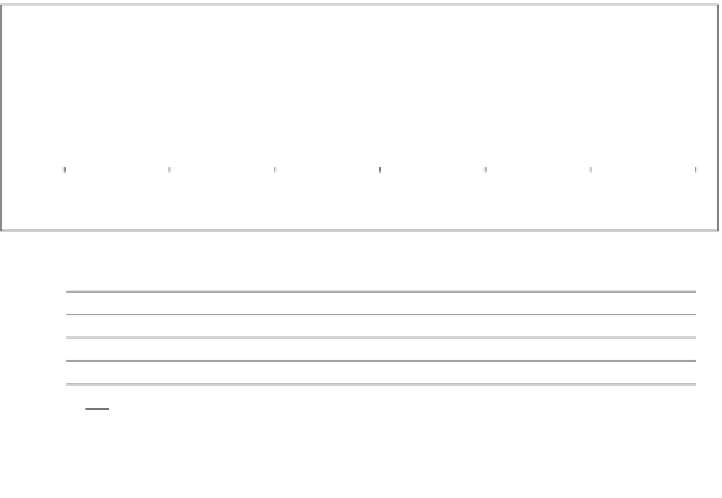Agriculture Reference
In-Depth Information
Projectwide
Preference by Gender*
100
100
80
80
60
60
40
40
20
0
20
Preference
Adoption
0
Female
Male
Key:
S. sesban
preference
By Head of Household
100
T. vogelii
preference
80
pigeon pea preference
60
S. sesban
adoption
40
20
T. vogelii
adoption
0
pigeon pea adoption
Female-headed
Female-headed
By Landscape
100
80
60
40
20
0
Dambo
Dambo Margin
Hillside Dambo
Dambo Margin
Hillside
By Wealth Group
100
80
60
40
20
0
Wealthiest
Poorest
Middle-Income
Figure 9.5
Percentage farmer adoption and preference of the legume species in 2003, both project-
wide and disaggregated by gender, head of household, wealth rank, and landscape. (Data from
Sirrine, D., C. Shennan, and J.R. Sirrine. 2010. Comparing agroforestry systems' ex ante adoption
potential and ex post adoption: on-farm participatory research from southern Malawi.
Agroforest.
Syst
. 79(2):253-266.)
We found that pigeon pea was often stereotyped as women's and children's food in
this region, so it was not surprising that females were more likely to prefer pigeon pea
than males (
Figure 9.5
)
. Women spoke of its role as an additional food source, and a few
mentioned the ability to sell excess seed and retain the money themselves for household
purchases. Conversely, many men said they did not like to consume pigeon pea but rather
preferred to consume meat and fish. FHHs were also more likely to prefer pigeon pea than





































































































































Search WWH ::

Custom Search